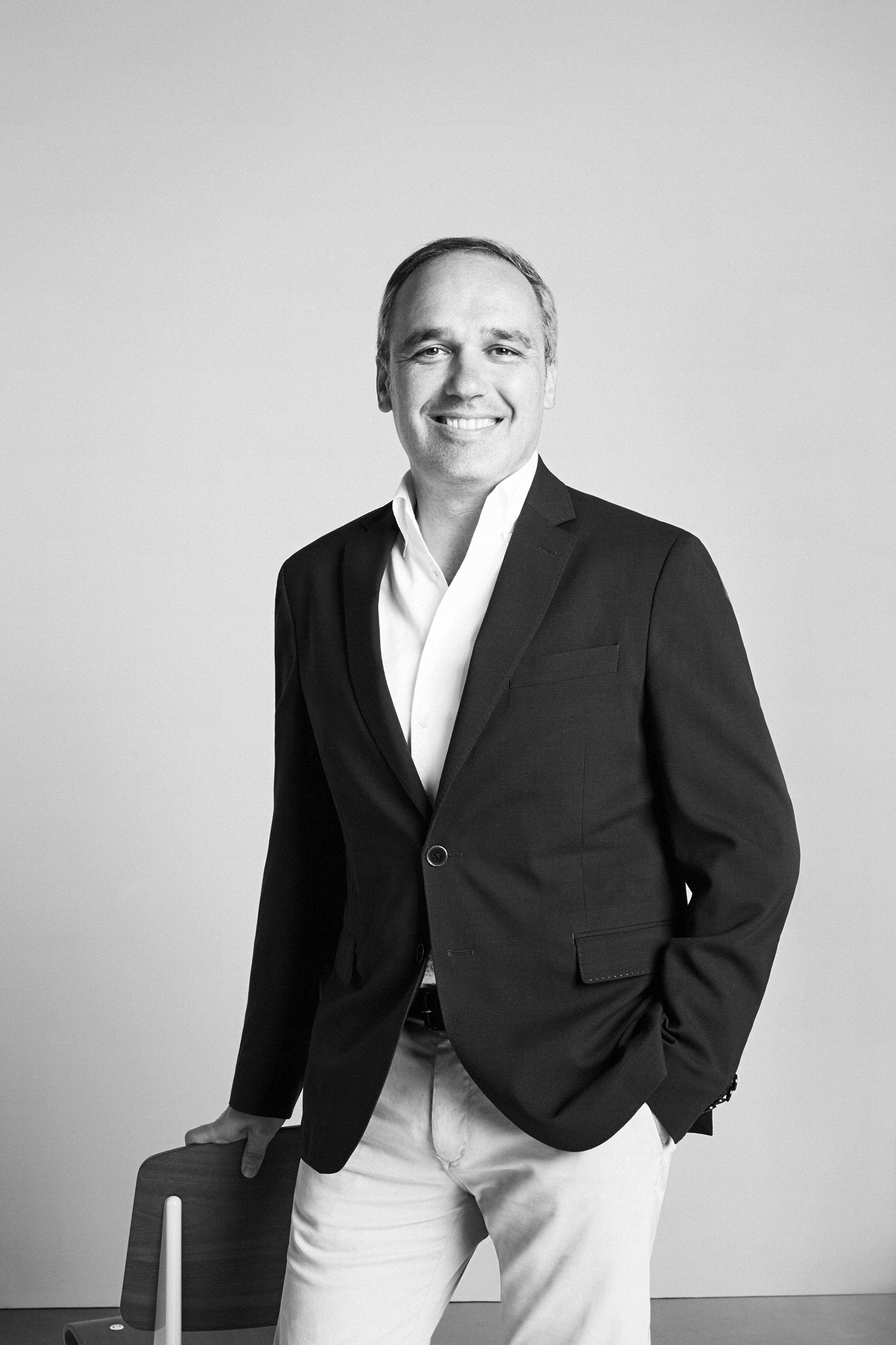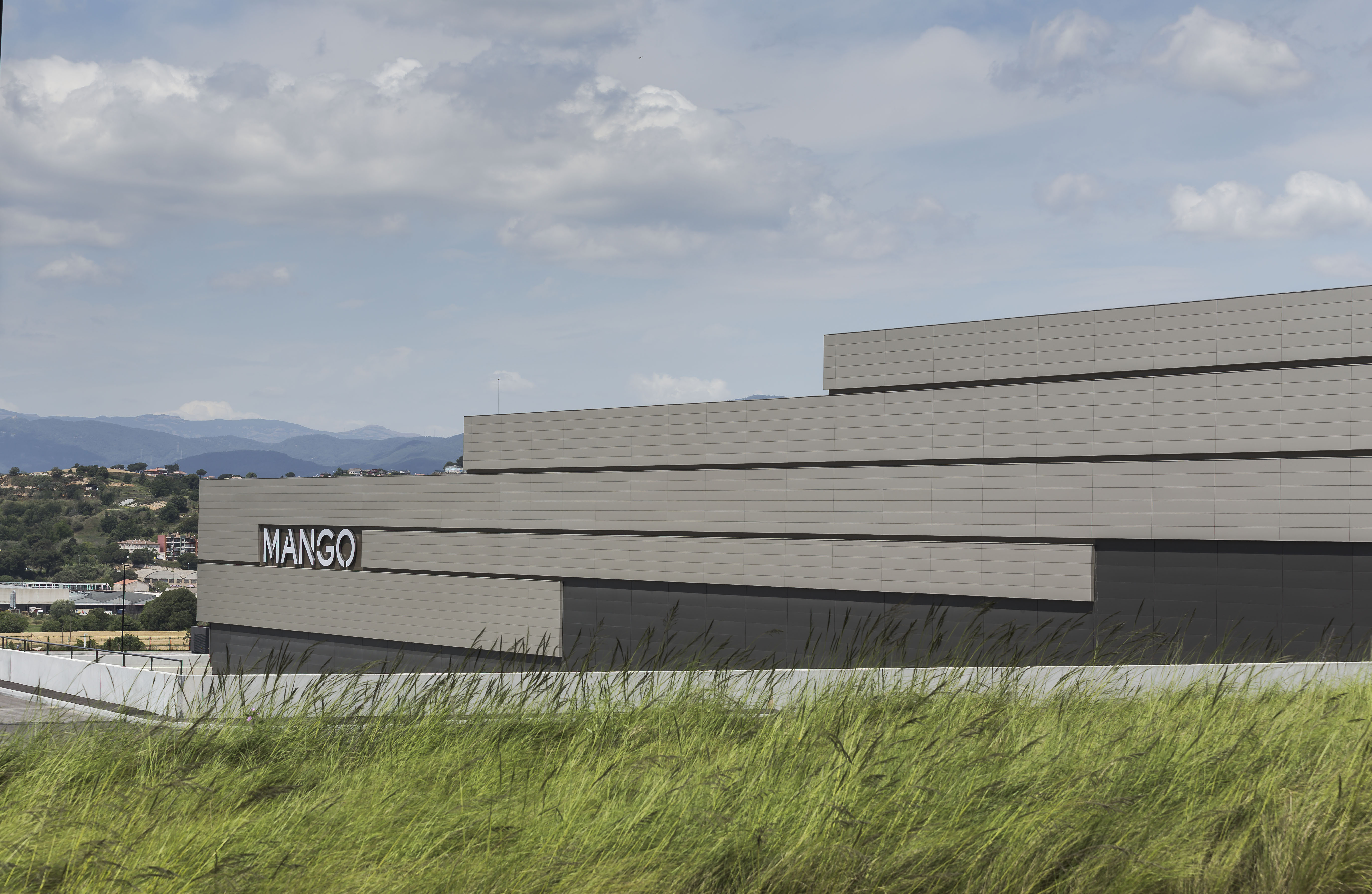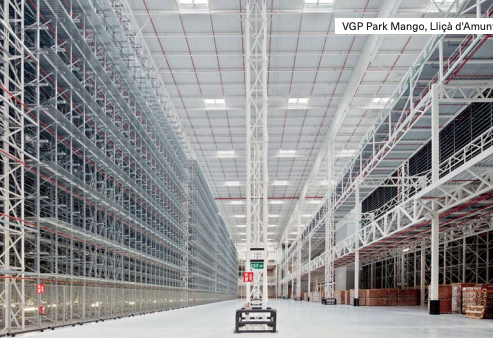Selling clothing to the whole world demands impeccable logistics
Excellent logistics is extremely important in 21st century retail. Certainly that is true of Mango, the Barcelona fashion house which has more than 2,000 stores around the world, all of which are served from a new, central logistics centre in Spain.
We asked Daniel López, Executive Vice-President of Mango, to tell us about how logistics is incorporated into Mango’s operations, about its newly opened logistics centre, and how the company is preparing to meet the challenges of the future.
We know that at Mango you regard concept, team and logistics as the keys to your success. Let’s focus in here on logistics, if we may. What are the key elements or aspects of your logistics that help to create Mango’s competitive advantage?
Our supply chain is one of the keys to delivering on the ‘fast fashion’ model that defi nes Mango. We have several transport options depending on the date that a product must be exposed in the store. We send the initial order to the stores and we keep a portion in our warehouses to be able to react when the product has been sold. Once in the store, the day after a sale is made, boxes are being prepared and dispatched to replenish the store. Our warehouses are 24/7 receiving the transmissions from the stores to cover the gap generated, either with the same garments or new ones. We want our clients to be able to find new product every time they visit our stores, so we have to focus in on all the steps within the logistic process in order to achieve that.

Daniel López, Executive Vice-President of Mango

VGP Park Mango, Lliçà d'Amunt

The huge logistics park at Lliçà d’Amunt near Barcelona must be a very important part of your overall logistics structure. Can you summarise for us how that fits into the overall logistics and business strategy?
With the new logistics Park at Lliçà, all our logistics operations will be performed at the same warehouse. That means we will group both hanged and folded packaging into the same work area. Also, our cross-dock process will be managed through the new warehouse. It will permit our transport partners to centralise their own activity at just one delivery and pickup point. This will give us the opportunity to be even faster than we are now, and we will benefit from this by being able to serve our stores even better. Moreover, we will be able to manage three times the volume that we are facing today. This is crucial not only to having the fastest response within our ‘fast fashion’ model, but also for achieving our expansion plan. We will also continue to operate within our external warehouses, however, in order to satisfy the demand in some of our key markets.
In 2016, Mango and VGP agreed that VGP would acquire Mango’s logistics centre and adjoining industrial development land at Lliçà d’Amunt and then rent the logistics building and office space back to Mango on a 30-year lease. That had to have been a fairly complex transaction, but obviously it is a win-win deal for Mango and for VGP. Can you tell us about how this transaction originated and came together, what is the final result, and what are the benefits?
Indeed it was a complex transaction, but one that was possible because both Mango and VGP realised that it would be beneficial to both parties. Right from the outset, both parties worked in a cordial manner and this made the negotiations much faster and simpler. The logistics centre is one of the most modern logistics plants in Europe, with approximately 180,000 m² of space that will be fully operational during 2017. It is also worth noting that the centre allows for future expansion of up to 80,000 m², which would make total space of 260,000 m².
Logistics is not just about warehouse space, forklifts and a clever dispatcher anymore. Can you describe for us the technologies, systems and organization of your state-of-the-art logistics centre and operation?
The new logistics centre at Lliçà d'Amunt combines the latest handling technology, to provide the fastest operations, with a warehouse management system, to provide intelligence and efficiency to those operations. The installation combines zones of high stock density (we call these ‘silos’) with very dynamic zones where orders are filled. These orders are distributed through various classifiers, and this allows us to serve the optimum quantity to the stores in the shortest time. The warehouse management system enables us at all times to have an up-todate view of the installation, the stock and the orders, and it allows us to take the best decisions at any time to provide the best service to our stores.
It is more important than ever these days for companies to show that they are sensitive to social and environmental concerns. Surely, that is very much the case for a high-visibility and reputation dependent company like Mango. How are these issues reflected in your new logistics centre?
It is very important for Mango to be committed to all kinds of environmental issues, and Lliçà has provided a new opportunity to work on this. In order to minimise any possible impact on the landscape, all excess soil originating from the construction work was redeployed within the industrial park to avoid transport and waste disposal. As part of the development, a 10,000 m³ pond was created. It was specifically designed to support biodiversity and microhabitats together with 395,000 m² of green zones with low water consumption based upon indigenous trees and plants. Finally, the completed park has a rain management system to re-use rainwater. Moreover, the building has remote management of lighting conditions with point-to-point regulation, and a low consumption lighting system.
In recent years, Mango has been growing very quickly in several markets. Where do you consider will be Mango’s main expansion areas and growth opportunities in the foreseeable future?
We are currently present in 110 countries, so we do not imagine that we will open in new markets in the short term. Our expansion efforts are characterised by a strategy which is committed to spreading in strategic markets in order to build a presence in these countries. Obviously, Europe is our main market, although we also have ambitious expansion plans in South America, the Middle East and Asia.
Mango has always put great emphasis on the design and function of its stores. These days, of course, more and more of retail is moving online. How do see that phenomenon changing Mango and its business model in future? How will you preserve and cultivate Mango’s unique and valuable image as fashion retail evolves?
The on-line channel is a strategic bet for Mango that will leverage the company’s growth in the future. Mango launched its e-commerce platform in 2001, being one of the first fashion retailers to do so. This provides us a great expertise in this area that has allowed us to grow increasingly year after year since then. We distribute B2C orders in 83 of the 110 countries where Mango is already present. With a yearly growth of over 25% in 2015, the internet sales already account for more than 10% of the total Group revenue and it’s forecasted to reach 20% by 2020. We do not distinguish between channels (on or offline). Our goal is to offer our customers the best experience in whatever channel they decide to interact with the brand. We need to adapt ourselves to the new customers who do not differentiate between channels. They simply want our brand to be consistent and friendly everywhere. We must make sure we can offer the best that each of the channels can provide and define omni-channel strategies which satisfy our client’s needs.
Finally, we just have to ask: Where does the name of Mango originally come from?
Our founder tasted a mango in the Philippines for the first time and fell in love with its taste. When he founded Mango, he thought of the name because of the good memories it brought back to him but also because it is a word that can be easily pronounced almost everywhere in the world. He already had the idea from day one to build Mango into an international brand